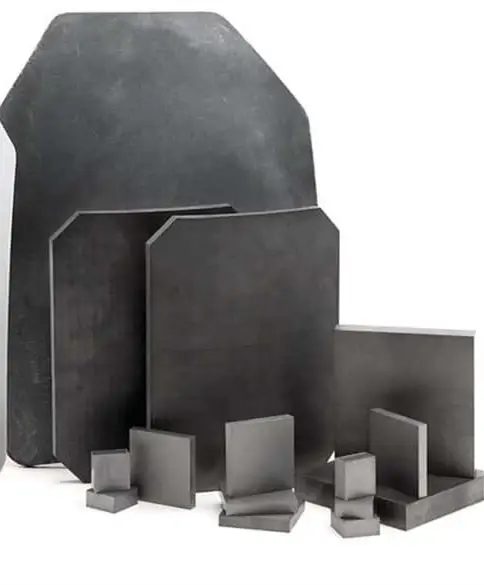Introduction to Special Ceramics in Ballistic Protection
Significance of ballistic materials
Emergence of special ceramics
Advantages of Silicon Carbide Ceramic Armor
Comparison with other materials
Variants of ceramic armor
Dominance of silicon carbide
Properties and Merits of Silicon Carbide
Crystal structures of SiC
Exceptional mechanical properties
Limitation in toughness
Potential improvements
Principles Behind Silicon Carbide Ceramic Armor
Basic principles of armor protection
Absorption of bullet energy by ceramics
Phases of energy absorption
Conclusion
Summary of silicon carbide ceramic in ballistic applications
In today's evolving technological landscape, the destructive capacity of modern weaponry has surged, consequently heightening the emphasis on ballistic materials. Among the highly favored materials, special ceramics have significantly contributed to the realm of ballistic protection. Silicon carbide, specifically, embodies attributes like high strength, hardness, low density, corrosion resistance, and exceptional wear resistance. Its weight efficiency, especially in individual ballistic equipment like body armor, is remarkably evident. Current engineered ballistic ceramics encompass aluminum oxide, zirconium oxide, boron carbide, aluminum nitride, silicon nitride, and titanium boride. However, silicon carbide has garnered substantial research attention both domestically and internationally, emerging as a hotspot in recent years.

Among the prevalent ceramic materials used in ballistic protection—aluminum oxide, silicon carbide, and boron carbide—each exhibits distinct characteristics. Aluminum oxide, commonly known as alumina or the 'white plate,' possesses lower hardness (HRA90) among the three with greater density, yet it remains cost-effective. On the other hand, boron carbide, heralded for its high hardness and low density, offers the best performance but also comes at a considerably higher price point. Comparatively, silicon carbide (SiC), referred to as the 'black plate,' boasts an HRA of 92 and a density merely 82% that of aluminum oxide, striking a balance in performance and cost-effectiveness, thereby finding widespread applications.
Silicon carbide primarily exists in two crystalline structures: β-SiC (cubic) and α-SiC (hexagonal). It constitutes a compound with strong covalent bonds, showcasing approximately 12% ionic character in its Si--C bond. Consequently, in contrast to other ceramics like aluminum oxide and boron carbide, SiC demonstrates superior mechanical properties, oxidation resistance, higher wear resistance, and a lower coefficient of friction. Additionally, it boasts excellent thermal stability, high-temperature strength, minimal thermal expansion, high thermal conductivity, resistance to thermal shock, and commendable chemical corrosion resistance. These outstanding features have garnered appreciation from military experts worldwide, leading to its extensive utilization.
However, its inherent drawback lies in low toughness. The molecular structure and characteristics of silicon carbide contribute to its low toughness. While its immense strength can withstand substantial bullet energy, it may fracture or shatter upon impact, rendering silicon carbide ceramic plates for one-time use, generally unable to sustain multiple shots. Nevertheless, numerous researchers in the field of materials science suggest that addressing this low toughness issue theoretically involves controlling the sintering process and fabricating ceramic fibers. Such advancements could significantly broaden the application scope of silicon carbide in ballistic protection, positioning it as an ideal material for manufacturing ballistic gear.
The fundamental principle behind armor protection involves the dissipation of bullet energy to decelerate the bullet, rendering it harmless. While traditional engineering materials like metals absorb energy through structural deformation, ceramics, including silicon carbide, absorb energy via micro-fracturing.
The energy absorption process of silicon carbide ballistic ceramics typically involves three stages:
Initial Impact Phase: The bullet impacts the ceramic surface, blunting its tip and absorbing energy during the fragmentation of the surface into small, rigid fragments.
Erosion Phase: The blunted bullet continues to erode the fragmented area, creating a continuous layer of ceramic shards.
Deformation, Crack, and Fracture Phase: Eventually, the ceramic undergoes stress, leading to its fracture. Subsequently, the backing plate deforms, absorbing the remaining energy. Both the bullet and ceramic undergo damage during the impact process.
Considering the aspects of performance, pricing, and future prospects, silicon carbide ballistic ceramics hold substantial research value and are anticipated to witness increasingly extensive applications in the field of ballistic protection!
Silicon carbide ceramic armor stands out as a pivotal material in the domain of ballistic protection due to its unique combination of properties, despite its limitations. Further advancements in overcoming its low toughness could significantly expand its applicability, making it a quintessential material in the production of ballistic gear.
Can silicon carbide ceramic armor withstand multiple shots?
What are the key differences between silicon carbide and boron carbide armor?
Are there ongoing research endeavors to enhance the toughness of silicon carbide?
How does silicon carbide compare to steel in terms of ballistic protection?
What are the primary factors influencing the widespread adoption of silicon carbide in ballistic applications?

Submit your demand,
we will contact you ASAP.

Sanxin New Materials Co., Ltd. focus on producing and selling ceramic beads and parts such as grinding media, blasting beads, bearing ball, structure part, ceramic wear-resistant liners, Nanoparticles Nano Powder

